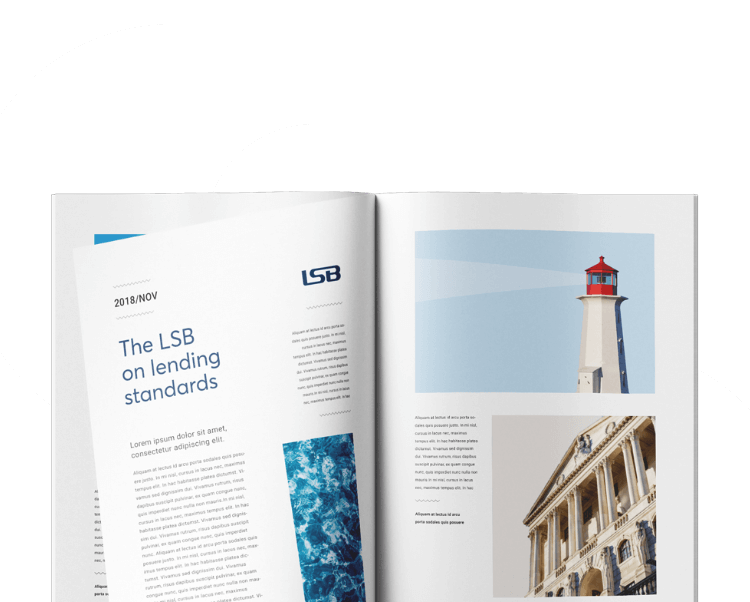Last week, Anna Roughley spoke on a panel at Credit Connect’s Credit & Technology Think Tank event. Anna spoke alongside other industry professionals on developments to watch out for in the future as well as key factors every financial services firm should be talking about right now, including expectations for the new normal. You can read highlights from her contribution to the panel below.

*The notes below may differ from those delivered on the day*
5 hot topics:
Inclusive design – ensuring products and delivery are suitable for all
- When considering how they design and deliver products and services, firms need to ensure that they are suitable for every type of customer who may access them.
- This is different to who the product is necessarily designed for, for example, the target audience for that product. Rather, it is about considering that different customers with different needs may also want or need the product, and so the offering should not disadvantage them.
- Firms can do this by involving a wide range of people within the development and design stage. This includes both different stakeholders from within the business as well as externally.
- For example, within the business, this means that firms should be sure that vulnerability specialists are involved to give a different view on how the product journey may work.
- Firms should also consider any external views they get and use on how they are working. Using customer complaints and review sites is one way this can be achieved, as is using customer panels or other research activity to gather views prior to a product launch.
- For example, at the LSB we have heard of examples of firms building customer panels and taking them through the proposed customer and product journey, to gather their views and opinions. By making sure the panel is reflective of the wide range of potential customers, firms can be more confident of achieving a product or service design that is inclusive and takes into account different customer needs.
The new normal – approaching engagement and operations in a remote working environment
- Working remotely on the scale we now are across financial services would have been unimaginable before the impact of coronavirus.
- Now working remotely is the new normal and for many businesses is a permanent change. We know that a number of firms have either confirmed that working from home is now a permanent fixture and others are seriously considering it.
- There are two main considerations here, one focusing on staff engagement and the other on operational effectiveness.
- On staff engagement, firms need to consider if there is appropriate support and development for all staff. For example, we know that although working remotely may be beneficial for more experienced colleagues, new joiners and those at the start of their careers may find it harder to feel a part of the firm, make important contacts, and progress.
- On operational effectiveness, we know the majority of firms did a great job of adapting during the pandemic. However, if remote working is permanent then firms may need to review their approach and processes to ensure they are as good as can be.
- For example, previously there could have been ‘make-shift’ processes or training put in place due to having to deal with the impact of coronavirus and the unforeseen nature of it. It is understandable that temporary fixes or processes may have been created at the time but they may not be appropriate now and may need changing.
- There are other areas of focus to when it comes to remote working, such as the approach to delivering assurance, training, and feedback. For example, can firms be confident their ways of delivering feedback and monitoring of staff are as effective remotely as they were in the live environment? If not, what can be done to raise standards?
Culture – the importance of culture in this new way of working
- The culture of a firm impacts every element of how it conducts its business. For this reason, embedding the right culture is vital to ensuring that firms are doing what they say they do and delivering good outcomes.
- A poor culture can lead to bad outcomes in a variety of ways, from having inadequate governance structures, to offering the wrong incentives, or having staff who misunderstand how customers should be treated.
- Cultures can also change, for example, the culture within firms that are now predominantly working remotely will likely be different to how it was when office based.
- I think it is this change in how we as an industry operate that brings a closer focus on culture. We are in the relatively early stages of working remotely or having organsiations with a large proportion of their workforce being offsite. Is it possible that this will have a detrimental impact on firm’s culture, with a disjointed and inconsistent understanding as to how the firm should be delivering its goals?
- With this in mind, it would be valuable for firms to keep a close eye on their culture and how it develops over the coming months and years, with steps taken to mitigate any risks if they arise. How firms can monitor culture is an interesting question and one worthy of its own session, but I think that it involves considering the tone from top and the values of the organisation and then mapping these to the outcomes the firm is delivering and how it is treating its staff.
Flexibility – adapting to change in underwriting and collections
- Another major factor of coronavirus is that we as are all more aware as to how quickly life can change.
- This includes in relation to how we live, for example, with lockdown and restrictions in place, as well as in terms of health, any additional needs customers may have, and financial difficulties.
- With this in mind, there are interesting questions for firms to ask themselves about how they establish affordability both before issuing any credit and when considering forbearance plans.
- Certain questions are now worth asking as an industry, for example, how to manage the uncertainty at the heart of agreements or plans that will last many years? What I mean is that we expect a lot to change over such periods and perhaps recent history has shown how much can change at short notice. Indeed, near unforeseeable events can happen that can massively impact the ability of whole cohorts of customers to be able to pay.
- Firms should be considering what steps are available to mitigate the risk of these plans going wrong despite the uncertainty.
- For example, in longer term plans, should firms have pro-active contact times to see how the plans and agreements are working? If such contact is not practical or suitable, then firms need to have flexibility built into plans and agreements in case of difficulties or a material change in the customer’s situation.
- In terms of how this may differ in terms of forbearance pre-pandemic and the subsequent economic shock, firms can use the available data and insight they have to establish what is needed. For example, by looking at the success rates of plans, firms can tell what point any are breaking down and if there are trends. If trends are identified, then looking for the root cause can help find any issues in design or if there are common problems in terms of the customer journey.
Collaboration – how cross-sector engagement could improve outcomes
- As an industry, there has been some really great examples of how financial services has reached beyond its own sector to engage with others for better results.
- A clear example of this is in relation to vulnerability and signposting. It is now accepted knowledge that there are situations where organisations outside of the firm itself are better placed to provide support.
- Firms should be confident that their staff are trained and there is internal support and guidance in place to ensure that signposting works as well as possible. We also know how third party organsiations come in and deliver training or other sessions within some firms, improving the knowledge of what support is out there. This can then be shared with customers, increasing the likelihood of them taking up instances of signposting.
- I mention collaboration as a hot topic because it is possible there are other areas where there are opportunities to increase cross-sector collaboration to improve outcomes.
- One example of this is in relation to scams. At the LSB, we are the overseeing body for the Contingent Reimbursement Model Code (CRM Code) that sets out how signatory firms should deal with Authorised Push Payment (APP) scams.
- As we will all be aware, scams are increasingly a major threat facing many customers throughout the country. The media is constantly highlighting examples of scams of different types and sizes which demonstrate the devesting impact they can have on customer’s lives. Just the other day, the BBC and other news sites reported how a man had his home stolen and sold through an ID theft fraud.
- Perhaps by increasing engagement with organsiations beyond financial services, it may be possible to improve how we support customers both in the education of scam types and fraud awareness.
- This could be with charities or other third sector organisations, the police itself, Action Fraud, or other industry bodies, for example, within legal bodies due to the impact of fraud when criminals pretend to be solicitors or other legal professionals. This is one example, and we know it is happening in some situations, but the example of vulnerability shows how beneficial such cross-sector engagement work can be.
3 developments to watch for the future:
Best practice standards – how self-regulation can mitigate risk in emerging areas
- As I’m here representing the Lending Standards Board, it would be remiss of me not to mention the importance that best practice standards not only have but will continue to have into the future.
- One major reason for this is the speed of change within both credit and collections. This relates to both new entrants coming in, for example, fintech or other digital providers, and also new products entering the market.
- Because of this pace of change, there is often calls for regulation or other oversight over new areas. A clear example of this is at the moment is in Buy-Now Pay-Later. There are currently calls for increased FCA regulation of this area due to the potential customer harm from unaffordable plans or contracts.
- One major advantage that best practice standards, such of the Standards of Lending Practice, have is that they can be designed and implemented at a faster pace than regulatory rules.
- By also bringing together stakeholders across the industry and gaining agreement before taking steps to implement new standards, firms have both a buy-in and say in how those standards are built. For example, at the LSB we do this through the consultation process and by having an open dialogue with our firms as to what is working, where there are areas for improvement, and where new risks need addressing. For example, this happened during COVID-19 when we addressed our business Standards to account for Bounce Back Loans.
- The pace of change will increase the need for best practice standards and self-regulation that is robust, overseen, and provides confidence to both the public and regulators that customers are receiving good outcomes.
Education and financial rehabilitation – why the importance of financial education is increasing
- My second development for the future is that we need to focus on financial education in an effort to increase rehabilitation.
- We will all be aware of the concept of financial education and the importance of it in order to improve customers’ ability to access the best product for them, whilst understanding what they are agreeing to.
- It also seems that in the future, education needs to focus further on financial rehabilitation. This means being able to take customers who are now in a financially precarious situation and turn them over time into confident and assured customers who are able to withstand most economic shocks.
- The level of financial difficulty caused by the pandemic has shown its importance. By thinking about how best to equip customers for any future challenges and also setting them up for the rest of their lives, education should form a part of this.
- To give a practical example, I previously mentioned the CRM Code designed to address APP scams. Part of this Code is the provision that customers who fall victim to a scam receive sufficient aftercare. This means educating the customer on scams to increase the likelihood of them recognising future attempts and stop them falling victim to them again.
- The same should be true of financial difficulties. We should be ensuring that customers receive sufficient aftercare and education to enable customers to better handle their finances, save for the future, or even flag earlier for help. These steps will help some, although not all, customers and improve financial rehabilitation. This is relevant at all stages of financial difficulty, from those customers in the early-stages of pre-arrears, to those within the recoveries journey.
Proactive identification in the digital space – how firms can identify additional needs digitally
- There is an increase in firms offering digital only journeys to customers and this seems likely to only grow in the future. One of the few potential benefits of the pandemic could be that more of the population is comfortable interacting digitally due to having to learn during periods of lockdown and branch closures.
- When it comes to the digital space, there are challenges in how to identify additional needs. For example, without regular telephone contact or branch visits, firms may find they have less opportunities to ask the customer about their situation or identify where further support may be required.
- For this reason, it is important that providers consider the data that is available to them in terms of management information or other insight. This can then be analysed to identity opportunities for early customer engagement.
- An example of this could be thinking about how digital firms address pre-arrears.
- By reviewing the data that was available before the missed payment and considering other elements of the journey (for example, did the customer contact the firm beforehand or frequently change payment dates?) firms can see if there were missed opportunities to contact the customer and discuss potential forbearance measures or other options. This insight can then influence the continuous improvement and development of the pre-arrears process.
- I know that this area of supporting customers in the digital space is an area the LSB is going to continue to focus on with our registered firms due to its importance in mitigating customer harm.









